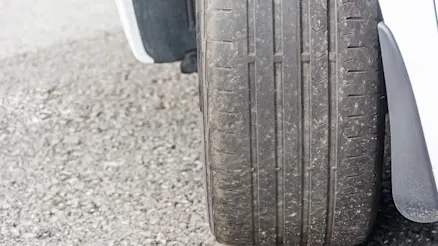
What to do when your car overheats
Car overheating? Learn why it happens, what to do (and avoid), and follow our step-by-step guide to stay safe and prevent engine damage.
Knowing how to change a tyre is an essential skill for all drivers. On daily commutes, school runs, road trips, or shopping trips, the unexpected could happen and having a good understanding of car maintenance is essential. While the thought of having to deal with a flat on the highway can feel daunting, you can save yourself a whole lot of frustration by knowing how to change a tyre safely and conveniently.
With a few tools and practice, you can be safely back on the road in no time at all. To help you through the process, here’s Carma’s Lead Technician James Weaver with some easy to follow step-by-step instructions on how to change a tyre. First, let’s start off with handy information about the different spare tyres you’ll find equipped in your car.
Space saver or temporary spare tyres are becoming more and more popular these days as they are lighter and take up less space. A lightweight temporary tyre also means better fuel economy while it hangs out in your car’s boot floor. “A space saver spare is designed for max speeds of 80km/h and shorter distances,” says James, “it’ll cover the trip to a service station or tyre shop to get the right size tyre fitted on”.
Full-size spare tyres are regular tyres that are the exact same size as your car’s tyres. “You can drive with a full-size spare as you would normally,” adds James, “I’d also advise still going to a tyre shop to make sure the spare tyre is fitted on correctly and get a new spare tyre for the future.”
“Most cars today will have the basic tools you need to change a tyre, but if you find yourself in a situation where you don’t have the tools or aren’t feeling confident enough to do it yourself, you should drive slowly to a safe spot where you can call for help from a friend or roadside assist.” advises James.

Turn your hazard lights on and slowly pull over to the side of the road and try to park in a safe spot with a level surface away from passing vehicles. Put on your hazard lights and make sure the car is in park with the handbrake on. If you’ve got wheel chocks, fit them on to secure your car from rolling off accidentally.
Take your car jack, wheel brace and spare tyre from the boot. If you have hubcaps, unclip it from the flat tyre and use your wheel brace to loosen each wheel nut. Remember, ‘lefty loosey, righty tighty’. If you need more force to get it going, use your foot on the wheel brace or get your body weight behind it.

Find the correct spot on your car’s frame to place the car jack. This is usually a flat point underneath the frame, some cars may also have arrows to indicate. If you’re not sure you can always check the user manual. Then lock the wheel brace and cranking handle together to wind the jack up until there is a 5-10 cm gap between the ground and your tyre.

Using the wheel brace, remove each loosened wheel nut completely and put them in a safe place.
Wheels can weigh up to 8-10 kgs or more, so carefully remove the flat with both hands. Then replace the flat tyre with the spare, lining it up with the wheel holes before placing the tyre onto the wheel hub.


Put the wheel nuts back into place and tighten them as much as you can with your hands, following a star pattern to ensure that the wheel is drawn down evenly.

Wind the jack down until the spare tyre can take on the car’s weight on the ground. Remove the jack and use the brace to fully tighten your wheel nuts. In the same way as you loosened the wheel nuts at the start, put your full body weight in or use your foot to tighten the wheel nuts as much as you can.
If your tyres have a hub cap, fasten it back on. Put your tools and flat tyre in the boot, start your car again, and get back on the road!

Car overheating? Learn why it happens, what to do (and avoid), and follow our step-by-step guide to stay safe and prevent engine damage.

Discover what wear and tear means for your car, with key examples like tyre wear, brake wear, and paint fading. Learn how to minimise wear and keep your car in top condition.

Stay safe on the road with these essential monthly car maintenance checks. From engine oil to tyre pressure, learn how to keep your car running smoothly and avoid costly repairs.